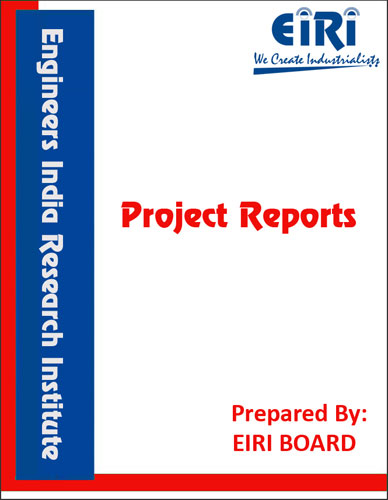The project report includes Present Market Position and Expected Future Demand, Market Size, Statistics, Trends, SWOT Analysis and Forecasts. Report provides a comprehensive analysis from industry covering detailed reporting and evaluates the position of the industry by providing insights to the SWOT analysis of the industry.
A PCB is a printed circuit board, also known as a printed wiring board. It is used in electronics to build electronic devices. A PCB serves two purposes in the construction of an electronic device; it is a place to mount the components and it provides the means of electrical connection between the components.
Multilayer PCB Is made up of three or more conductive layers (copper foil layer), these layers are pressed together and form multilayer PCB. Copper foil layer is bonded together by PP (prepreg), Multilayer PCB is one of the most complex types in printed circuit board. Because of the complexity in PCB manufacturing process, low yield rate and difficulty of rework, making the price is relatively high.
Due to the packaging density increase in integrated circuit, which bring about interconnect highly concentrated, thus using multilayer PCB become necessary. In the layout of printed circuit boards, sometimes it will have some unforeseen design problems, such as noise, stray capacitance, crosstalk and so on, therefore, when design printed circuit board, it must be committed to make the length of signal wire as short as possible and avoid parallel circuits, etc. Obviously, it is hard to get satisfied solution from single-sided PCB or even double-sided PCB, due to the cross circuit number is limited. In the demand of mass interconnection and interdigitation, if printed circuit board wants to achieve a satisfactory performance, it must be extend to more than two layers, thus the multilayer PCB appeared.
Multilayer PCB at least has three conductive layers, two layers on surface side, and the rest of the layers are synthesized inside the insulation part. The electrical connection between each layer is usually realized by plated through hole. Unless special instructions, both multilayer PCB and double-sided PCB are plated through hole printed circuit boards.
A multilayer board consists of a number of layers of dielectric material that has been impregnated with adhesives, and these layers are used to separate the layers of copper plating. All of these layers are aligned and then bonded into a single board structure under heat and pressure. Multilayer boards with 48 or more layers can be produced with today’s technologies.
In a typical four layer board design, the internal layers are often used to provide power and ground connections, such as a +5V plane layer and a Ground plane layer as the two internal layers, with all other circuit and circuit package formats.
In electronics, printed circuit boards, or PCBs, are used to mechanically support electronic components which have their connection leads soldered onto copper pads in surface mount applications or through drilled holes in the board and copper pads for soldering the component leads in thru-hole applications. A board design may have all thru-hole components on the top or component side, a mix of thru-hole and surface mount on the top side only, a mix of thru-hole and surface mount components on the top side and surface mount components on the bottom or circuit side, or surface mount components on the top and bottom sides of the board.
The boards are also used to electrically connect the required leads for each component using conductive copper traces. The component pads and connection traces are etched from copper sheets laminated onto a non-conductive substrate. Printed circuit boards are designed as single sided with copper pads and traces on one side of the board only, double sided with copper pads and traces on the top and bottom sides of the board, or multilayer designs with copper pads and traces on top and bottom of board with a variable number of internal copper layers with traces and connections.
A PCB is found in almost every electronic device. If you have electronic components in a device, they are mounted on a PCB, big or small. Besides keeping the components in place, its purpose of a PCB is to provide electrical connections between the components mounted on it. As electronic devices have become more complex, and require more components, the PCB has become more populated, and dense with wiring and components.
INTRODUCTION
USES AND APPLICATION
B.I.S. SPECIFICATIONS
MARKET SURVEY
DETAILED IMPORT DATA OF BOARD BARE FROM UNITED STATES
MANUFACTURER/SUPPLIERS OF PCB
MANUFACTURING PROCESS
PCB MANUFACTURING STEPS
PROCESS FLOW CHART
QUALITY CONTROL
PLANT AND MACHINERY
IT HAS GOT THE FACILITY OF INSPECTION OF PHOTO FILMS AND PCBS UNDER A TABLE LAMP WITH A MICROSCOPE.
SUPPLIERS OF PLANT AND MACHINERY
SUPPLIERS OF RAW MATERIALS
APPENDIX – A :
1. COST OF PLANT ECONOMICS
2. LAND & BUILDING
3. PLANT AND MACHINERY
4. FIXED CAPITAL INVESTMENT
5. RAW MATERIAL
6. SALARY AND WAGES
7. UTILITIES AND OVERHEADS
8. TOTAL WORKING CAPITAL
9. COST OF PRODUCTION
10. PROFITABILITY ANALYSIS
11. BREAK EVEN POINT
12. RESOURCES OF FINANCE
13. INTEREST CHART
14. DEPRECIATION CHART
15. CASH FLOW STATEMENT
16. PROJECTED BALANCE SHEET



